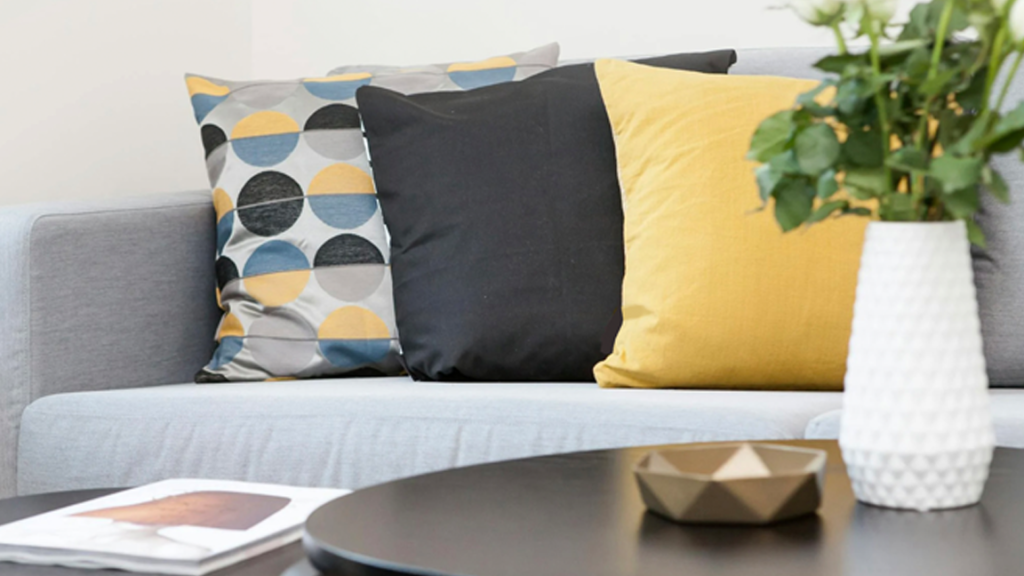
Sometimes, the interior spaces of our homes become lethargic and stagnant. Yes, things can get tired and stale, much like aspects of our lives, if we’re not proactively looking for change and new experiences. Some homeowners (like many of my readers) will change their interior design often, giving their homes a fresh look when inspired to do so. I strive to provide inspiration and unique ways of changing up your design to try something new! I have shared blog posts about everything from Relaxing Colors to Space Age Design! Here’s a new idea to keep you excited about new possibilities for designing your home!
As a career color consultant/color expert, my role is to remind people of how inspiring new design can be and how it can impact not just the aesthetics of your home but also make a positive mental impact! In this article, I will discuss the power of high-contrast colors and how different combinations and palette arrangements can spark life and inspiration into spaces that desperately need it!
According to Merriam-Webster, the definition of contrast is:
“a
: juxtaposition of dissimilar elements (such as color, tone, or emotion) in a work of art
b
: degree of difference between the lightest and darkest parts of a picture.”
To put it simply, in terms of design, high-contrast colors are combinations of colors that stand out strongly against each other due to their differences in hue, brightness, and saturation. These color combinations are intentionally loud and want to draw in the eye. They are not subtle or seamlessly integrated into the background—attention-grabbing presentation is the whole point.
There are many reasons why someone would want to use high-contrast color combinations in their design. At the forefront are creating visually engaging spaces, adding focal points, and even architectural delineation. Contrasting colors help highlight a space’s characteristics and functional details and even help people navigate areas better. When done well, high-contrast colors can also update a space, giving it a more contemporary vibe.
When I convince a client that creating greater contrast will not only be more interesting and engaging to the eye but also help people navigate the space better, the idea becomes much more sensible/practical to those who initially may be more resistant to it.
I can think of many places where highly contrasting colors work wonderfully, as I have used them in client projects. Still, there are particular areas where the aesthetics and functionality of contrasting colors just hit that perfect note.
Stairwells
It may initially seem odd, but stairwells are perfect for contrasting color combinations. In fact, they can help keep people safer by clearly signaling where the rails and steps lay. By using starkly contrasting hues, such as dark stair treads against light risers or white walls against dark railings, people will have a better chance of navigating the stairs safely, especially if there’s not much natural or overhead light.
The stair tread is the flat top part where you step, and the riser is the vertical plank supporting the riser. I like using lighter colors for the riser and darker colors for the tread. Navy and creamy white look wonderful, and black and white are also classic. For something a little earthier/warmer with high contrast, forest or olive green tread and a creamy beige riser would be a delightful combination. There are not a lot of decorative elements in a stairwell, so try something new with the contrasting colors of the stairs themselves!
Bedrooms
With bedrooms, there’s a great opportunity to add a splash of personality with a dynamic accent wall contrasting with the surrounding walls and painted trim. An accent wall highlights the room’s orientation, and using a high-contrast color combination, like a deep teal or ocean green against a lighter, delicate white, is an engaging but relaxing combination.
Living Rooms
For those who want to experiment with high-contrasting colors but don’t want to commit so much to painting walls, experimenting with living room furniture and accessories is a great place to start. For example, if you have a neutral-colored sofa or sectional (many people have some form of gray or beige), you can create a dynamic contrast by using accents like throw pillows with loud colors, such as sunlight-electric yellow. Complete the scene with window treatments that share the same accent color to unite the room. It’ll energize the space without too much expense or effort!
I want all my readers to recognize that being energized doesn’t necessarily mean you have to use excited or loud colors if that doesn’t fit your personality. You can create an energized space with softer hues and earth tones, but there must be intention and strategy behind your selection to avoid a flat-feeling space!
I hope you all energize a space in your home or office that needs it! Please share design strategies that you use to bring some life back to dormant interior spaces; I love hearing your stories.